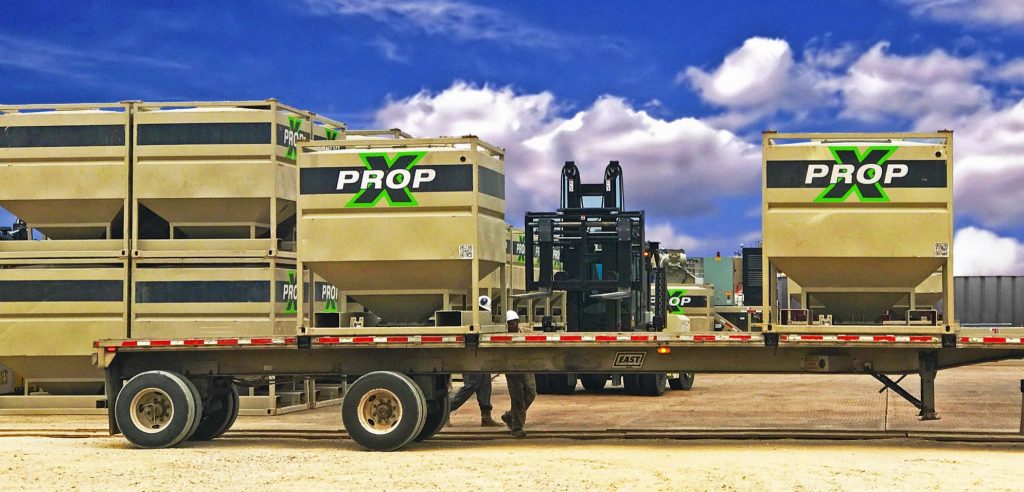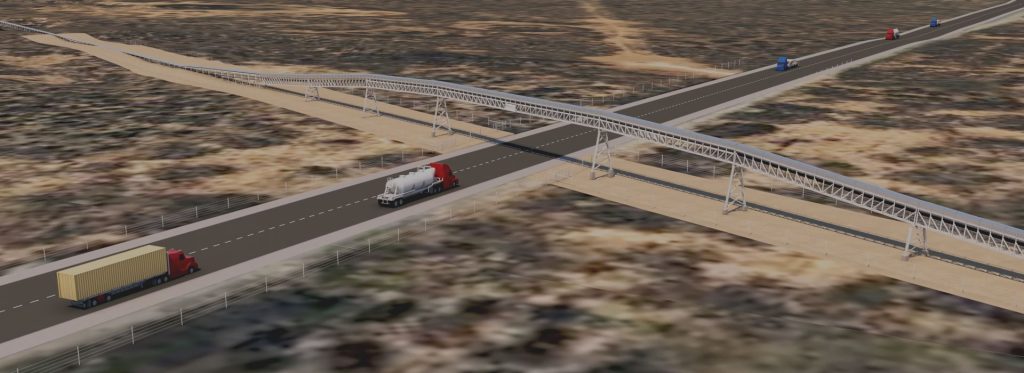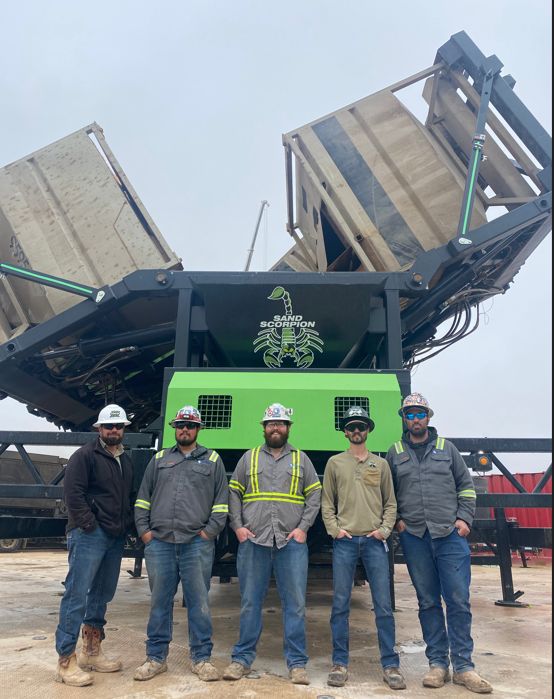As prevalent as a PropX box. While that line, above, is not a commonplace figure of speech in the Basin, it might as well be. The PropX box is everywhere. That’s because sand is everywhere—or at least it is going everywhere. And usually on the road that you are driving on.
When God put the oil in the Permian Basin, he put the sand here to go with it. Well played, God. Well played.
The Odessa American reported late last year that “Permian frac sand mining continues to increase to support the surging Texas oil industry, but not with fast-rising costs.”
While companies like PropX, Black Mountain Sand, Smart Sand Inc., and others have revolutionized the industry, the biggest changes to this innovative sector in 2024 surely will be those that come with Atlas Energy’s Dune Express project, a sand-hauling conveyor belt that will span 42 miles upon completion. It will deliver sand from Atlas’ mine at Kermit, Texas, to Lea County, N.M.
Getting Granular
PB Oil and Gas Magazine spoke with Kyle Turlington, vice president of investor relations for Austin-based Atlas Energy Solutions, about the latest developments on their headline-making motorized belt.
Turlington remarked that the system powered by electricity is believed to be the first application of conveyor technology to long-haul proppant. He said benefits include reducing truck traffic to improve road safety and reducing emissions.
A $400 million project, the Dune Express is designed to transport 13 million tons of proppant a year with more than 75,000 tons of dry storage. It will have permanent loadouts at State Line in Texas and in Lea County. It also will have mobile loadouts to further shorten proppant transit to wellsites. The project is said to be on budget and on track.
Turlington said that the process of getting the permitting done and getting the right-of-way secured and approved took about four years. Later came the issue of their Initial Public Offering (IPO) in March 2023. Then Atlas Energy began ordering its equipment, including especially the longer-lead-time items, and construction began, while still in the first half of 2023.
“We’re still in the very early stages [in early 2024], but we’ve been fortunate that the supply chain is less of an issue today than it was a couple of years ago,” Turlington said.
Despite the fact that years have passed since the project was conceived, the idea has retained its viability, and Turlington attributes that to the fact that the Dune Express deals in transport, not in the commodity of sand, per se. Sand prices have been volatile and might remain volatile, but the business of transport has remained stable and should stay that way.
“We’re designing this thing and building this thing to lower the cost of sand delivery, and it has nothing to do with the cost that we’re charging for sand. And the delivery of sand is where that market has been very stable,” Turlington said. “The [motive] for the construction of the Dune Express is multifaceted. It’s better for the environment; it makes the roads safer, and it makes the communities that people operate and live in safer. But it also helps us lower the cost of sand delivery. We’re [currently] selling only 13 million tons of sand into the Delaware Basin, the demand for sand in that basin is well north of 13 million tons. So the market could even soften and we’d still not have worries about selling those 13 million tons.”
Beltmaker on Board
Back in August, Continental Conveying Solutions, based in Ohio, announced that Atlas Energy had contracted Continental to supply the conveyor belt for the Dune Express. “During the planning phase, the two companies worked closely together to solve various technical challenges that had arisen due to the size and complexity of the project,” the company announced in a prepared statement. “For example, the system will include one span in particular that will feature a world record single conveyor belt flight length of 16.4 miles without a mid-booster drive.”
Andreas Gerstenberger, CEO, said, “We’re very grateful to our partners at Atlas Energy Solutions for their trust in our expertise and for the great collaboration on this challenging project. We’re confident this conveyor belt approach will make an incredible impact.”
What Might the Dune Express Achieve?
Anyone who has paid a modicum of attention to the Dune Express story already knows that the conveyor belt will transport sand for over a vast distance. But there’s more to this project than just logistics.
Turlington explains the bigger picture:
“Basically, the Dune Express begins with [an Atlas Energy facility] in Kermit, Texas, where we have two very efficient sand plants, and it’s taking that mine and more or less ‘fictitiously’ moving it to the heart of the well sites [in Lea County, N.M.].
One of the advantages and the reason why we’re taking all these trucks off the road is that off the public roads is that inside the Delaware Basin—that is, inside the state line drop off facility, and then in the end-of-the-line facility—those areas are an enclosed [area serviced by] private lease roads, Turlington continued. “So on those private lease roads, we no longer have the weight restrictions that you have on the public roads. So we’re allowed to take heavier loads. You can see on our website [AtlasEnergy.com] where we talk about double and triple trailers. All of this allows us to be more efficient in delivering the sand to the blender and, again, keeps all that traffic off those public roads.

A PropX Box. Maybe the most ubiquitous container to be found anywhere in oil country. Was it PropX that coined the term “containerization”?
“So I think activity levels just within these ‘heat zones,’ as we call them, or lease road networks, will amount to enough activity to keep us busy for years and years. Obviously we would not be spending 400 million on a project if we thought if we didn’t see decades of sand demand in these areas.”
Asked what he thinks has been the biggest difference across the Permian Basin over the last several years, Turlington didn’t hesitate.
“The amount of sand being pumped is the biggest difference,” he said. “Whether it’s from longer laterals, whether it’s from frac efficiency, whether it’s these electric fleets or just the fact of how efficient operators are becoming, with simul-fracs or trimul-fracs, all of this has led to more sand being pumped. If we were to look at how much sand an average frac crew pumps per month, we’ll see that that number has steadily improved every single year. I think proppant demand continue to rise just because of the continued improvement in completion efficiencies and new technology. And that underlying trend, I think is very healthy for the industry.”
















